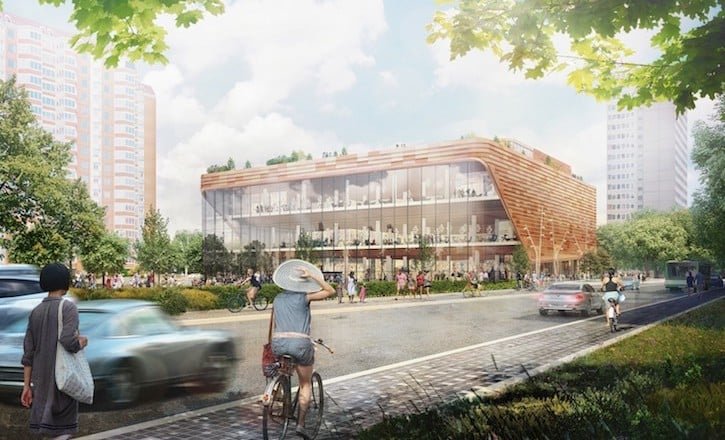Offline retail is losing ground to the digital world. Online sales in the U.S. and UK are growing by 15% annually. Online sales account for 16% of the world market today, but there is no doubt that very soon it will turn into 43%, with another 55% digitally influenced sales, said Frank Lieset, a partner at McKinsey & Company, at MAPIC 2017.
For the retail industry, sticking to traditional retail model is the shortest way to obscurity.
All over the world malls are getting empty, brands are going bankrupt, and retail workers are losing their jobs. Store closing announcements in the U.S. has increased by 97% in 2017, according to Fung Global researchers. Meanwhile, in Russia, the attendance of shopping centers has fallen by more than 20% in the past two years. About 700 thousand square meters of retail space was empty in Moscow in 2016, Knight Frank experts estimated.
In 2017 Adidas has announced the reduction of stores in Moscow. Mexx, Mamas & Papas, Accessorize, C&A and other brands said they were considering the possibility to leave the Russian market.
Adidas, Stockmann, and Incity have already announced the reduction of stores in Moscow. BNS Group, with brands like Calvin Klein and Armani Jeans, has also suspended the business development. Lindex, Herve Leger, and Camaieu are considering the possibility to leave the Russian market altogether.
Developers are revising the shopping experience: the concept of pure shopping with fashion as an anchor is to be replaced by retailtainment and F&B. And it looks like only malls with an ideal location and an updated in line with the latest trends could have successful soon.
A decade ago shopping malls used to attract both teenagers and their parents. New mall openings were long-awaited events. If teenagers were looking for a place to hang out, they most likely had to choose malls with its food courts, cinemas, and chain stores. Today malls have lost its star power. Modern consumers are craving uniqueness and personalized experience, so they prefer independent shops.
In the meantime, millennials are spending on average six hours a day online. They do not want to wait in lines and spend more time than necessary to buy stuff. This generation of consumers is very mobile, and retailers have to learn how to satisfy shoppers needs anywhere and anytime. For retail market, it’s an excellent opportunity to shift shopping experience online or to make it hyper-local.
According to ADG group, an urban developer from Moscow, consumers lack the motivation to visit substantial retail spaces in the suburbs. Time is the most critical asset, and nobody wants to spend it in traffic jams. These days Muscovites are looking for quality retail as close to their place of residence and work as possible. Also, the traditional shopping malls’ model has ceased to attract visitors. It doesn’t guarantee stable traffic and revenue to tenants anymore.
In the era of the Experience Economy, the consumer pursues emotions and new useful knowledge. These drastic changes have paved the way for fundamentally new modern retail projects, such as the network of 39 Neighbourhood centers being developed by ADG group in Moscow.
The Neighbourhood centers project’s mission is to revitalize the historical centers of gravity of 39 old Soviet cinemas located in Moscow’s densely populated urban areas and to bring a new quality of urban life and retail convenience to over 2,5 million Muscovites living in 15-minutes walking distance from them.

The concept of Neighbourhood centers’ network is unique. It offers their visitors everything for a quality time spending and proximity shopping, providing all the essentials in a convenient and comfortable environment with a superior customer experience and respect to the interests of the local communities. And at the same time, it enlarges the role of landlord from only providing square meters to driving tenant’s business, using the latest technologies and providing direct
contact the customer.
The traditional consumption model, a basis of malls’ business used for years, isn’t relevant anymore: large malls are struggling to attract customers and to guarantee a stable footfall and tenants’ revenue.
Until the last MAPIC, key developers have been stuck to the idea of building up a uniqueness within the brick & mortar concept; now we see the significant shift in common market perception is self-evident.
While the general assumption is that offline retail is getting outplayed by the digital world, and brick-and-mortar ones are seeking for online sales, we are witnessing E-commerce giants going offline – with Amazon’s well-publicized purchase of Whole Foods and Alibaba’s hosting of offline events and pop-up stores.
There are specific reasons why modern customer goes to a store. Retailers, who focus on human-centric customer experience, who provide extra services; the ones, sensitive to the TOP retail trends like retailtainment, proximity shopping, agile formats, the balance between online and offline, omnichannel approach, ‒ most of these trendsetters are highly successful now. And to have a chance to thrive in 2-5 years, all market needs to start building up specific capabilities.
Article by Anna Obraztsova, ADG group Commercial Director.